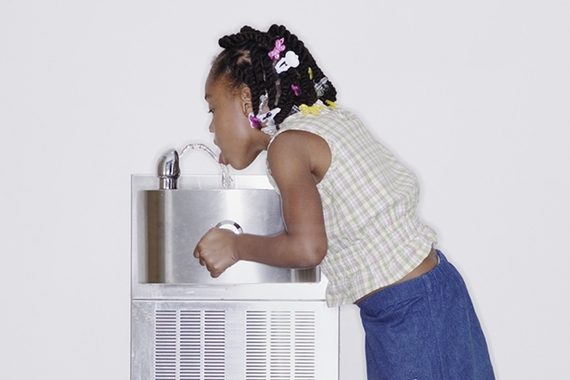I read the news of lead-tainted water in Flint, Newark, and elsewhere with sadness and outrage--but also with some puzzlement. Many of us believed that we solved the problem of childhood lead poisoning years ago. Nationwide data have reported that the percentage of tested children with elevated blood lead levels has declined dramatically since 1997. The number has even stayed below 1 percent for the last several years.
But tell that to the children and parents of Flint, who can't trust the water coming from their taps, and Newark, where high lead levels were recently reported in the public schools. Or to families in Los Angeles, Washington, D.C., Seattle, Baltimore, Ithaca, and other cities where high levels of lead have been found in drinking water in the last decade or so. Declining national rates don't mean much when your own children's health is threatened.
How can there be such a disconnect between the positive news from national data and the ground-level reality in many cities? For one, we're not measuring lead in drinking water at the right times or the right places. For another, we're not acknowledging that policy decisions related to water quality and urban infrastructure have disproportionately affected poor and minority children, putting them at heightened risk of neurological problems, learning disabilities, lowered intelligence, and behavioral problems.
If our goal is prevention--which it must be when it comes to lead--then a focus on blood lead levels is too limited and too late. Blood tests are critical for identifying children who have already been exposed to lead, but they come too late to be an acceptable indicator of whether a community has a lead problem; the damage has already been done. And since lead only stays in blood for about 30 days before being deposited in other tissues, blood testing only reveals current, not cumulative, exposure. We need instead to measure and treat the sources of lead before it ever reaches children.
This preventive approach successfully reduced children's exposure to lead from other sources. In the 1970s and 1980s, the federal government banned lead-based paint and phased out leaded gasoline. Taken together, these actions contributed to large declines in the percentage of children with elevated lead levels nationwide.
The 1991 Lead and Copper Amendment to the Safe Drinking Water Act requires testing for lead in some but not all schools and child care centers. According to the EPA, there are approximately 90,000 public schools and 500,000 child care facilities not regulated under the Safe Drinking Water Act. These unregulated schools and child care facilities may or may not be conducting voluntary drinking water quality testing. This fact underscores how important it is to test for lead in the water in homes, schools, child care centers, and all places with young children and to remove corroding pipes and fixtures that are the source of lead in the water.
This is what New York City, Lansing, Michigan, and Washington, D.C. have done, and what Flint has begun to do. But it's a costly proposition, especially for older cities with aging infrastructure and limited budgets; the current estimate in Flint is more than $3,650 per pipe, and the city has more than 8,000 pipes. Some urban school districts have resorted to bottled water, a less costly approach than replacing a city's water system, but one that places the lion's share of the cost on school districts, and comes with significant environmental consequences.
Decaying water systems are part and parcel of decaying urban infrastructure. The risks associated with lead in drinking water fall disproportionately on minority and low-income children. At first glance, replacing water pipes may not sound like a children's issue or an equity issue, but it most certainly is both. Whether at the federal, state, or local level, when policymakers decide it is too costly to replace aging pipes, they risk letting contaminated water into the mouths of millions of children--too often, those from low-income and minority families.
That's an argument that just doesn't hold water.
Carol Emig, President, Child Trends
